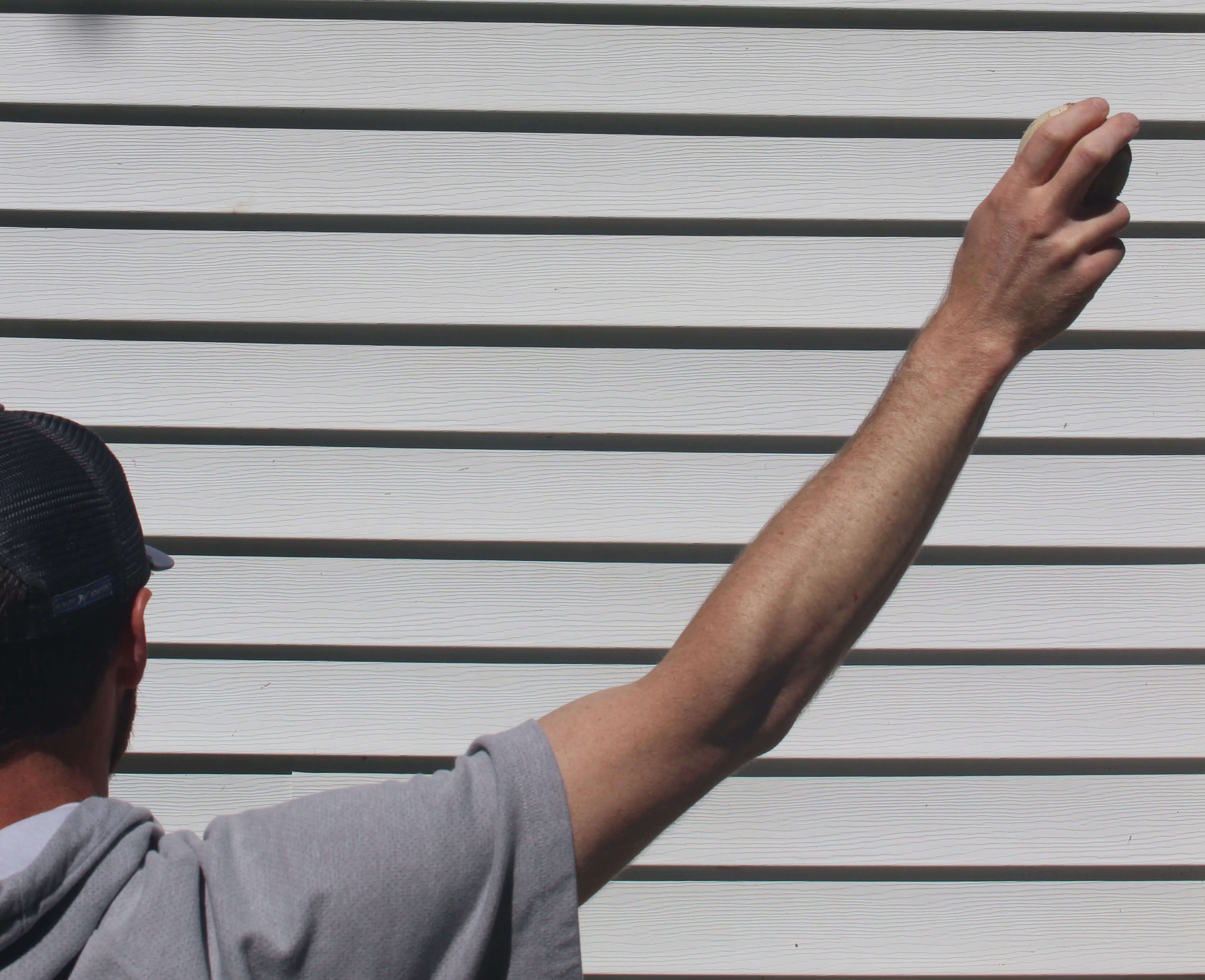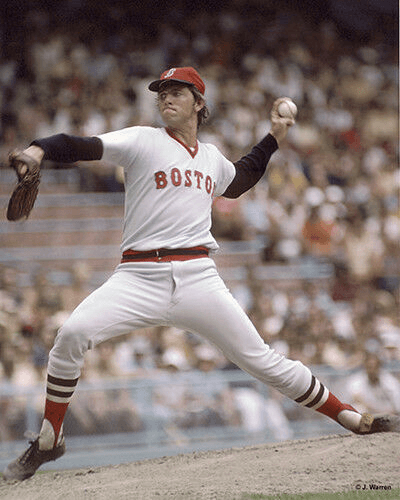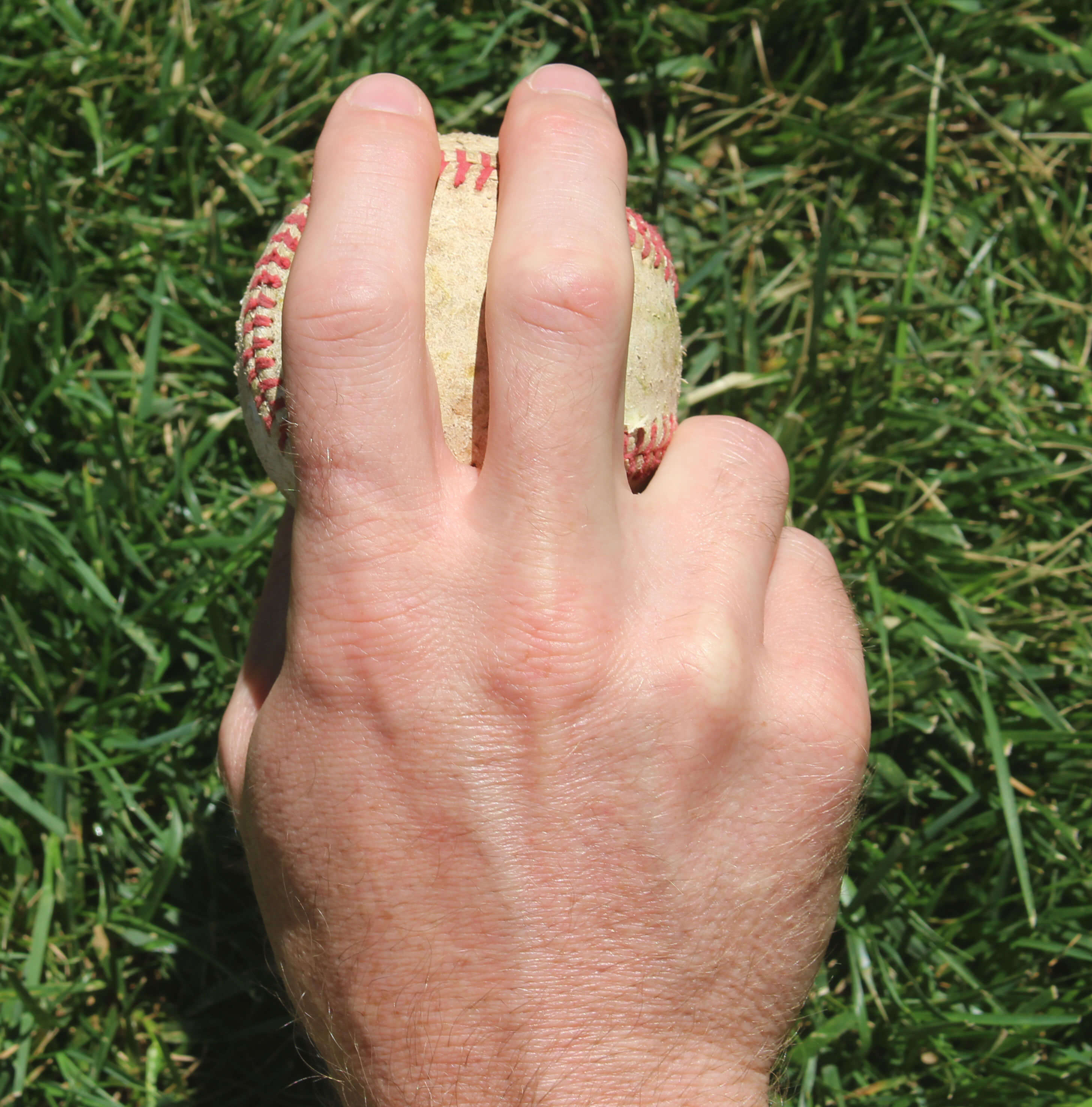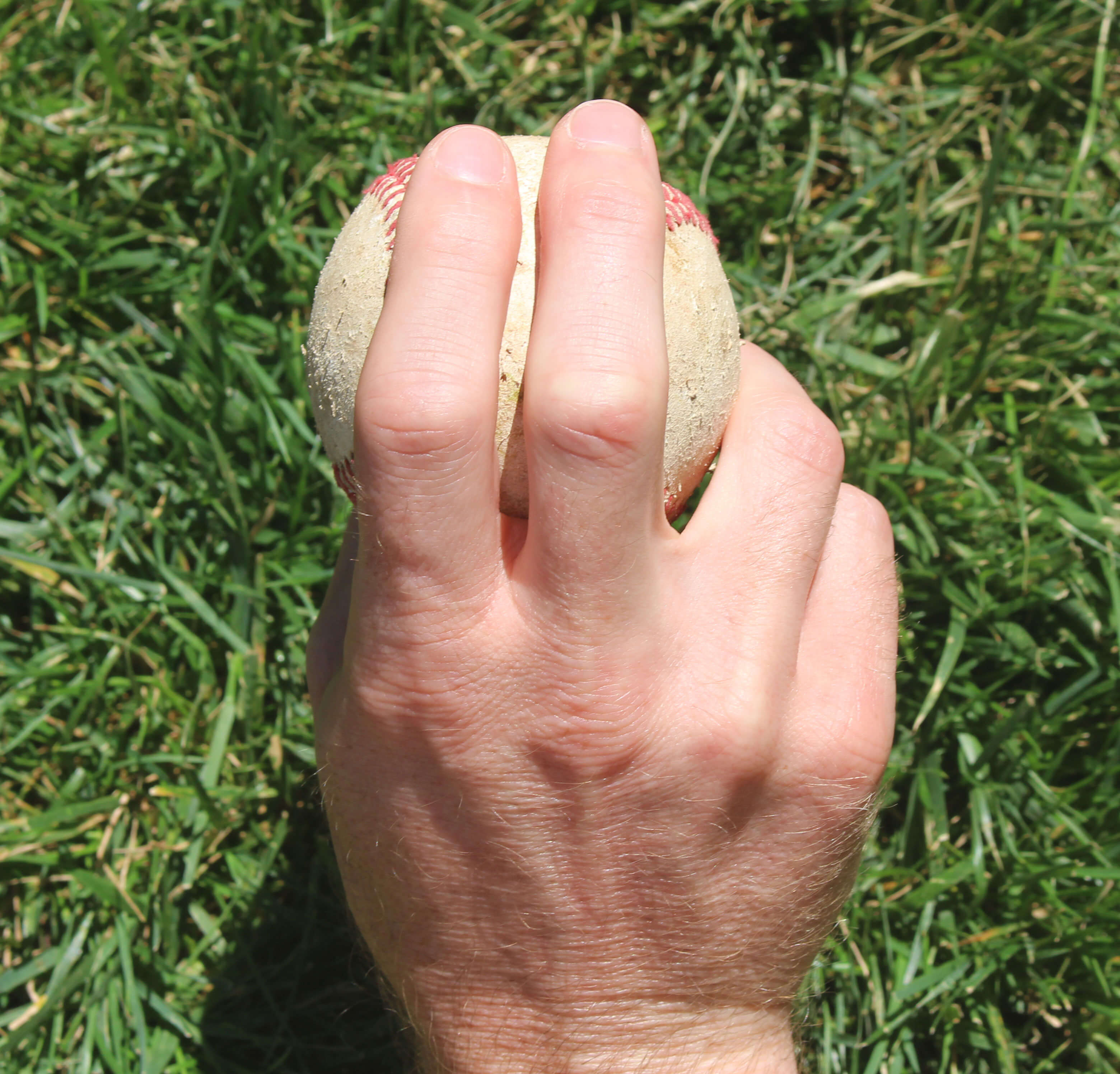Do you throw a 4 seam or 2 seam fastball? If you took a seat in a bullpen you might hear this question exchanged between pitchers through the din of sunflower seeds cracking and bubblegum being popped. Some fans and players might think all fastballs are the same, but they would be surprised to know that fastballs can come with different designs. The two main types of fastballs will be the 4 seam fastball and the 2 seam fastball. Come along as the Glove Experts at JustGloves dissect both pitches.
4 Seam Fastball
We’ll start with the 4 seamer. A pitching coach will tell you that a good 4 seam fastball is thrown with an over-the-top arm slot and with lots of spin on it.

When an MLB fastball is thrown with the above recommendations the pitch will usually arrive at the plate with a high velocity and if the pitch is located in the top portion of the strike zone (or even above it), it has a good chance of producing a swing-and-miss from the batter.
Tom Seaver a Rawlings man who pitched 20 seasons in Major League Baseball was quoted as saying that “[a] good rising fastball is the best pitch in baseball”. Before we continue, this writer must comment that it is impossible for a human to throw a rising pitch when it is thrown from a 10 inch mound toward a home plate that is 60 feet 6 inches away. However, due to the limitations of the human eye, an elite 4 seamer's ability to “drop less” as it arrives towards home plate, a batter’s eyes can be tricked into seeing a high velocity fastball rise as it crosses home plate.
 [Tom Terrific Seaver Preparing To Release a 4 Seam Fastball]
[Tom Terrific Seaver Preparing To Release a 4 Seam Fastball]
You’ll probably find that just about every pitcher has a 4 seam fastball in his arsenal of available pitches (no matter if they are a professional or an amateur pitcher). And while professionals will look for their 4 seamer to induce a swing-and-miss, amateur pitchers will often look to locate the fastball at a location likely to produce soft contact from the batter.
2 Seam Fastball Pitch?
A 2 seam fastball is a pitch designed to be thrown with a lower arm slot and less spin (when compared to a 4 seam fastball).

This pitch is going to feature more horizontal movement than vertical movement to it. And that horizontal movement will occur towards the arm side of the pitcher. So for example, if a right handed pitcher is throwing a 2 seamer to a right handed batter, the pitch will dart in toward the batter. Historically, the plan with 2 seamers was to keep them low in the strike zone and try to get hitters to hit the top half of the ball for an easy ground out. However, on the MLB level, batters have adjusted well to the low 2 seam fastball in recent years and its use has decreased over the past decade.
Oftentimes, you’ll hear a 2 seam fastball referred to as a “sink fastball” or “sinker”. The pitch got that name from past eras due to its low strike zone placement and its ability to produce ground balls. A pitcher in the past who made use of what he called a “sinking fastball” was Bill "The Spacemen" Lee.
 [Boston’s Bill Lee Tossing His Sinker With A Glove
[Boston’s Bill Lee Tossing His Sinker With A Glove
That Looks Vintage By Today’s Standard]
The low velocity at which Bill threw is unheard of in today’s game. But that lower velocity came about from less spin which plays well for a 2 seam fastball or sinker. And due to the angles at which his arm and wrist released the ball, he made a career out of getting batters to keep the ball on the ground in Boston’s Fenway Park (which he called home from the late ‘60s through the ‘70s).
Are a 2 Seam Fastball and a Sinker the Same Pitch?
The answer to this question really depends upon who you are asking. In this article, the writer has and will be using the terms interchangeably. But out in the world of pitching, there will be some who will say the 2 seamer and the sinker are different. Due to slightly alternating grips, arm slots and wrist angles; there will be pitchers who find that they get more drop on this pitch than others. Some out there might then say that the pitch that drops more is a true sinker (and different than a 2 seamer).
The one constant that seems to exist on all pitches referred to as a two seam fastball or sinker is that despite some slightly different grips, all of these pitches are released with the fingertips on the smooth part of the baseball (as opposed to the seams). This creates the unique movement that clearly separates the 2 seamer and sinker from the 4 seam fastball.
What is the Difference Between a 4 Seam and 2 Seam Fastball?
Along with the arm slots from which the pitches are thrown, the grips will be the big differentiators between a 4 seam and 2 seam fastball.
The 4 seamer will be gripped across the seams as shown below…

Due to the orientation at which the hand grips the baseball, you can sometimes hear a 4 seamer referred to as a “cross seam” fastball. This grip is advantageous for pitchers blessed with an arm designed for throwing hard. When gripping the pitch in the manner shown above, the fingertips are able to grip the seams creating more pressure on those seams when releasing the ball. This creates more spin and thus a higher velocity.
The 2 seamer will most commonly be gripped along the smooth part of the baseball as shown below…

When releasing a 2 seam or sink fastball, there will be less friction between the pitcher’s index and middle finger and the ball when compared to a 4 seamer. This causes the 2 seamer to spin less (compared to the 4 seamer) and helps create extra horizontal movement (which has historically made the pitch effective in MLB when located low in the strike zone).
Should I Throw a 4 Seam or a 2 Seam Fastball?
There are a few characteristics of your makeup as a pitcher that can help you determine if you should throw a 4 seam or 2 seam fastball.
First, take a look at your arm slot. If you throw with more of an over-the-top arm slot, the 4 seamer might be a better option for you. If you throw with an arm slot that is a little more to the side, then the 2 seamer could be the way to go.
Next, you can consider the velocity at which you throw. If you are blowing it by batters with ease, then definitely throw the 4 seamer (if hitters can’t keep up with your velocity, chances are that you have already been implementing a 4 seam fastball). However, if you throw a little softer, then consider adding the 2 seamer to your pitch repertoire.
Lastly, I did mention earlier that the 2 seam fastball has recently fallen out of favor in the professional ranks as batters have adjusted to it. However, be sure to remember that most batters out there aren’t professionals. An amateur pitcher could very easily pick up the 2 seamer and reap the benefits of having non-professional hitters hit the top half of the ball and create easy ground outs for your infielders.
_ _
It is our hope that you’ve learned a little more about the 4 seamer and 2 seamer and are considering using one or both of them in your arsenal this season. The next time that you take the pitcher’s mound, definitely make sure that you have a beautiful baseball glove with you. If you need any assistance making a purchase please call our Glove Experts at 1-866-321-4568, send them an email at experts@justgloves.com or chat with them here.




.jpg)
